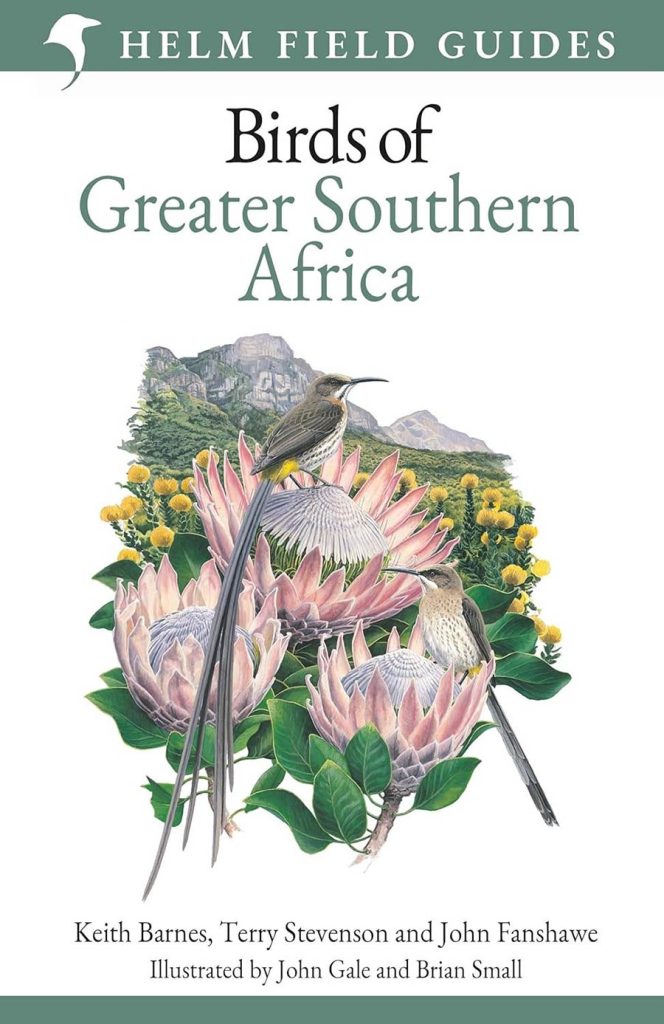Bird Book Review: Birds of Greater Southern Africa – Helm Field Guides 2024
This bird field guide review was written by Chris Lotz on 18 February 2024.

This is an excellent book that I recommend for birders visiting Zambia, Malawi or northern Mozambique which are not covered in the classic southern African birding field guides we recommend here. “Classic” southern Africa has a long history of good field guides and so birders visiting the southern half of Mozambique, Zimbabwe, Botswana, Namibia, South Africa, Eswatini (formerly Swaziland) or Lesotho are spoiled for choice. The under-birded but excitingly species-rich south-east African region encompassing the northern half of Mozambique, Malawi and Zambia has been begging for a field guide for decades. And here it is finally, although it’s a large, heavy book and so not as practical in the field as I would have preferred. If I could have had it my way, I would have rather seen this new book include only the countries not already covered well by the traditional southern African guides (plus I would have included Angola, and perhaps the DRC, which also really need field guides, rather than the places already well covered elsewhere). The book would then have been more compact and useful in the field, complementing the classic southern African guides well. Interestingly, however, this 2024 “Greater southern Africa” book also covers the Mozambique Channel separating the African mainland from Madagascar, and the Southern Ocean between the “African section of Antarctica” and South Africa. So, the book contains species like Snow Petrel that is an Antarctic rather than African bird, and Antarctic continent penguins but in an appendix. I do enjoy the fact that this book covers many pelagics around the southern African region, and birds of subantarctic islands like the South African territory, Prince Edward Islands (Prince Edward Island and Marion Island).
The illustrations, which are very good, are conveniently placed opposite the distributions maps and species account text, making it an easy to use, “modern style” field guide. The concise text is also very good, explaining well how to identify each species and also giving habitat and other key information. The distribution maps are fairly good although (necessarily, to fit in so many species) a bit small to show the birds’ ranges accurately and clearly; the authors have chosen not to zoom into just a piece of the total map for highly localized species and this has both advantages and disadvantages.
The authors have essentially done their own thing with regards to taxonomy and naming of each species, but in a very thoughtful and sensible way. Alternate names are provided, although I would have preferred these to have been more clearly shown in parentheses in the empty space after the primary species name. One example is “Orange-throated Longclaw”, where the now more widely used “Cape Longclaw” (which is arguably not accurate as the species’ range extends as far north as Zimbabwe) could have been shown more obviously.
Apart from the species accounts, this book also contains other excellent sections. The introduction of the book makes for an informative read, and some of my favorite sections are about migration and other movements of birds in the region, and habitat descriptions. At the end of the book, there is a vagrants watchlist, a checklist of birds of the southern ocean islands, a list of greater southern African endemics, a list of globally threatened species occurring in the region, nice maps of each country within the region showing Important Bird Areas (IBAs) and a list of additional reading.
